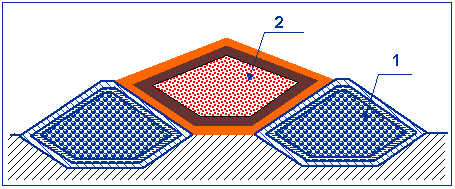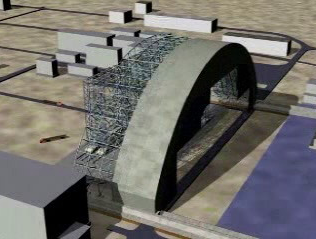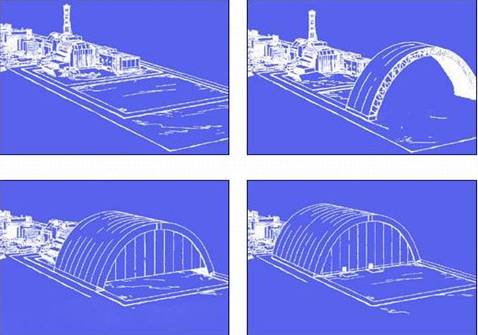Expert analysis of problem Chernobyl power plant
Tomsk Polytechnical University
«Expert analysis of problem Chernobyl power plant»
Made by:
Student of group 13A82, FTI
D. Sidelyov
Checked by:
S.S. Bydkova
Tomsk – 2010
CONTENTS
Introduction
1. Current status of Chernobyl NPP
2.Solutions
3. Conclusion
References
INTRODUCTION
This article investigates the problem of the 20th century, the name of which is the Chernobyl accident. As it is known, nothing has changed in the case of the Chernobyl disaster. Area around the power plant has become a zone of alienation. Nature and life destroyed, in addition, protective surface around the power plant almost destroyed due to the radioactive effects. There is also a huge problem to support the affected population: necessary to make a census of the affected population, to carry out compensation.
The accident occurred during the trials on the use of run-turbine generator for own needs nuclear power plant when its full deenergizing, it was the suggestion of the chief designer (Research Development Institute of Power, Moscow).
The tests are mainly regarded as a test of electrical equipment, the impact of such an experiment on the reactor was not sufficiently analyzed. Program for conduct such experiments was necessary to thoroughly discuss and agree with the general designer, chief designer, project scientist for nuclear power plants with RBMK (high-energy, channel) reactors (Institute of Atomic Energy Kurchatov (IAE), Moscow).
This was not done. Moreover, rules do not require from the management of nuclear power stations of the coordination of such programs with the above organizations at that time in the Soviet Union.
Successful completion of the tests from the current position, is unlawful.
Thus, the main causes of the disaster are:
1. Carrying out of underutilized and properly prepared electrical experiment.
2. Low levels of professional culture operators, guides as stations and electrification of the Ministry as a whole in the field of nuclear safety of NPPs.
3. Low level of security graphite-uranium reactor RBMK1000.
4. Design flaws RBMK1000.
5. Human error.
All these facts are known to the world community. However, the overall volume of work that was necessary to perform as a result of this disaster, the role of science in solving problems of radiation catastrophes, the role of interaction between government, scientists and political forces in the aftermath of the disaster, the role of socio-psychological factors remain unknown, not only a wide circles of the world public, but even (in some cases) public in affected countries. (1)
As known, the problem of Chernobyl nuclear power plant has not been solved completely, and at the present time these problems have to be decided.
There is a conventional way of solving the problem of protective infrastructure in the scientific world. This solution consists of two parts, such as:
-re-building protective surface;
-reburial of the generated waste.
My main aim is a finding the most suitable solution, while investigating the problems connected with Chernobyl NPP.
1. CURRENT STATUS OF CHERNOBYL NPP
chernobyl power plant
Chernobyl NPP, after shutting down the third power in 2000, is in the mode of termination and decommissioning. Termination of electricity Chernobyl was done on the basis of the Government of Ukraine signed a "Memorandum of Understanding between the Governments of the Group of Seven, the European Community Commission and the Government of Ukraine to close Chernobyl".
Total number of personnel at the Chernobyl NPP today is about 3.5 thousand people. A significant number of contractor personnel (about 2 thousand people) are also involved In the Chernobyl.
In preparation for the decommissioning of the Chernobyl nuclear power plant being built at the site of new facilities. (2)
2. SOLUTIONS
The old sarcophagus was strengthened in 2004-2008, bearing in mind that integrity will last about 15 years, but current status requires immediate repair. The main part of scientist considers that sarcophagus requires full changing. Then question about sarcophagus is closed. But questions about radioactive waste are being discussed nowadays.
Nowadays, radioactive waste, which are generated as a result of the work and decommission Chernobyl nuclear power plant, transport to the CDEP "Buryakovka. However, the volume of radioactive waste are large enough, so it is necessary to reconstruct the CDEP "Buryakovka" (pic. 1). The reconstruction CDEP means increasing production volumes for the disposal of radioactive waste. The project is the first reconstruction CDEP "Buryakovka" was based on the Cabinet of Ministers of Ukraine № 480 dated April 29, 1996. (1, 3)

Picture 1 – The scheme of reconstruction of CDEP "Buryakovka". (4)
CDEP "Buryakovka is intended for disposal of solid low-and intermediate-level radioactive waste. Repository has the form of modules (tranches), which could be repeated as many times, depending on the amount of waste to be disposed of. For burial radioactive waste, which are generated as a result of reconstruction of Chernobyl sarcophagus, it is proposed to re-use CDEP "Buryakovka", where necessary to increase production capacity according with plan 1996. (1)
The existing sarcophagus is temporary built over the destroyed reactor of Chernobyl nuclear power plant. The main purpose of the existing “Shelter” is to provide reliable isolation of radioactive materials from the destroyed reactor environment.
At the moment, the draft overarching protective shell "Shelter" has already adopted (pic. 2). New construction shall provide the possibility of partial dismantling of damaged and unsafe structures Shelter. In addition, the new shelter should have the facilities and equipment for safe work on the extraction and processing radioactive and fuel-containing materials. According to experts, this decision is best for a new containment. For new construction, specialists use the expression “confinement”. Thus a new protective structure has been called the New Safe Confinement. (4)

Picture 2 – The project of "Shelter". (3)
The main function of the “confinement” - to restrict the spread of radioactive substances, which are located in the Shelter. This condition must be met in normal operating conditions of “confinement” and in circumstances of the accident (the destruction of an existing object "Shelter "). It is envisaged that the new facility will be operated for a hundred years (design life).

Picture 3 – The process of the Arch assembling and sliding. (3)
According to preliminary data, the dimensions of “confinement” following:
- length of the building - 150 meters;
- height - 92, 5 feet;
- span arch - 257 meters;
- confinement area - 39,000 square meters.
One of the main peculiarities of the Arch is the fact that according to design, the Arch will be assembled at the 180 meters distance. It will allow decreasing irradiation of the personnel that will build the Arch. Special site will be prepared for construction. After completion of the Arch assembling on the special site, it will be slid to the existing Shelter by using special mechanisms (pic. 3). (4)
CONCLUSION
The Chernobyl disaster is a huge global problem of 20th and 21st century, because a lot of problems of accident of NPP exist at this time. The crumbling protective surface and reburial of the generated waste are main problems. More over, these problems must be decided as soon as can.
The most suitable decision of solving problem of wastes is a reburial in the repository "Buryakovka". This solution effectively, both economically and biologically. Also, the problem of protective surface has the solution. It is a building new "Shelter". This project supported by majority scientific institutions.
This report includes a main part of solving problems connected with Chernobyl NPP.
REFERENCES
1.20 years of the Chernobyl disaster. Looking to the Future: National Report of Ukraine. - K.: Atika, 2006. - 232 sec. (+ 8 ill.).
2. Klyuchnikov AA, Rudko V., Baty, VG, Podberezny SS, Fedorchenko DV Computer simulation of the radiation-hazardous areas Coll. scientific publications Information systems and technology. p. 310-312
3. E.Schmieman, S. Paskevych, A.Sizov, V.Batiy Chernobyl’s waste site Nuclear Engineering International. Vol 52. № 631. 2007. -P. 18-22.
4. Radioecology of Chernobyl Zone. Slavutich, 2002.